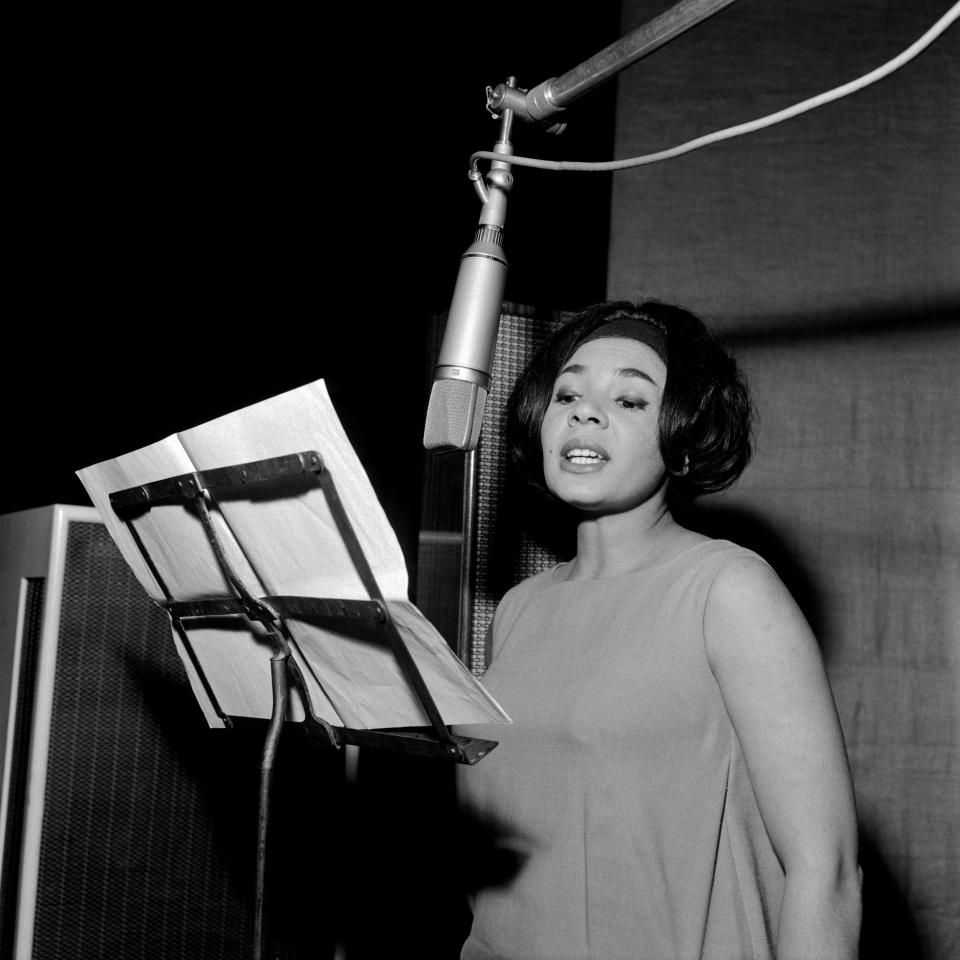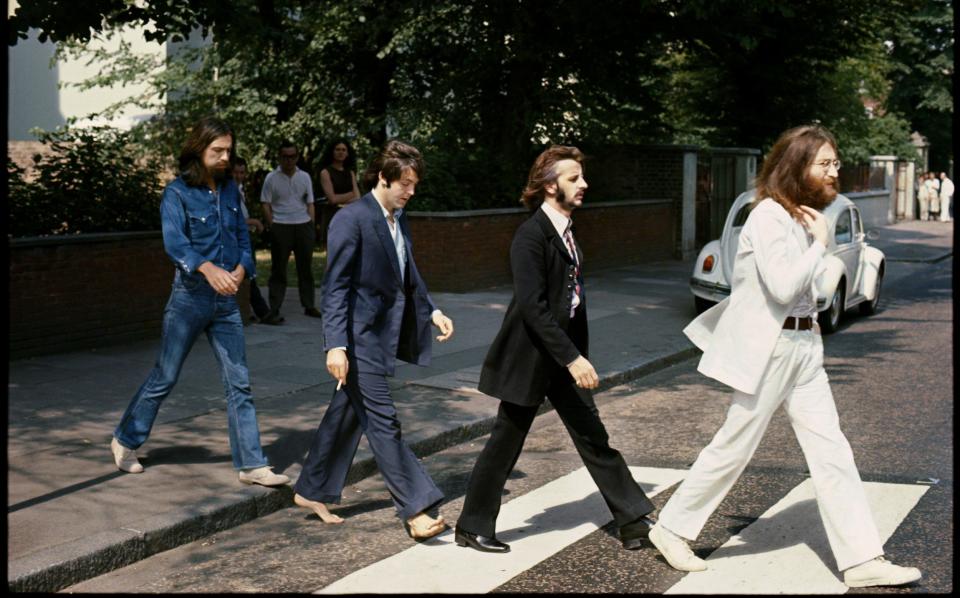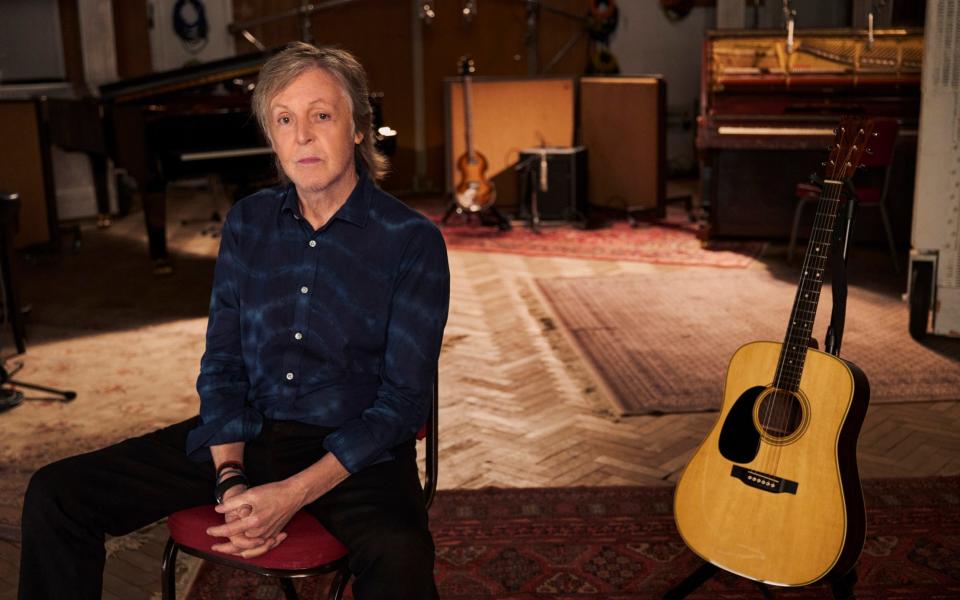The ‘soul’ of Abbey Road and growing up with the Beatles – as told by Mary McCartney

“We’d go there when Mum and Dad were recording,” says Mary McCartney. “We lived quite nearby, so after school, we’d pop by and say hello. Or during the day, I feel like we popped round when they were having lunch.”
The director of the documentary If These Walls Could Sing, which tells the story of Abbey Road Studios, is talking about her earliest memories of the place where Mum and Dad – Paul and Linda McCartney – were making albums together with Wings throughout the 1970s. They’re poignant recollections for her. “I really remember my mum being at the keyboards and stuff. She always looked so great… I was just used to seeing her at home.”
Mary’s famous father, of course, was returning to the place where almost all of the classic Beatles’ records had been created with producer George Martin in the 1960s. Mary wasn’t around for those; she was born in the summer of 1969 and can be seen as a baby peeking out of Paul’s fur-lined coat on the back cover of his self-titled 1970 debut solo album.
Yet for her film about the fabled recording studios, the portrait photographer has assembled an astonishing line-up of interviewees, from the surviving members of the Beatles and Pink Floyd to Elton John and Led Zeppelin’s Jimmy Page, who worked as session musicians there in the 1960s, to composer John Williams, who conducted the scores for Raiders of the Lost Ark and Return of the Jedi in Studio 1.
“Ringo was one of the first people I approached,” Mary says. “And my dad… and I was thinking, if they don’t say yes, what would I do?” Speaking to them on camera, though, was just like any other interview, she insists: “I did say to Dad, ‘Can you please bring your bass and an acoustic guitar? Even if you don’t play, it’s just nice to have them in.’ But I knew I was gonna ask him about Blackbird. And I said, ‘Look, if you are up for it, and you feel in the mood, then I would love it if you would play it, but there’s no pressure.’”
Paul does pick out the tune of his acoustic ballad from The White Album, and tells the story of how the sound engineer tried to get rid of the sound of him tapping time with his foot by putting a cloth down on the floor – although the completed track keeps it in. McCartney’s film is rich with these kinds of details, some of which emerged serendipitously.
The director knew, for instance, that there was an unusual story about the recording of Goldfinger for Bond composer John Barry in 1964. “We’d heard that Shirley Bassey had to hold the note at the end of the song for so long that she collapsed on the floor,” McCartney tells me, “and I was like, OK, that’s a great story, but we don’t have anything, this is just a myth. It’s folklore. But from the session sheets, the team saw that Jimmy Page was down as a guitar player on the session.”
Page confirmed every detail, noting that he was close to the singer with the orchestra behind him, and recalling the spectacle of Bassey performing the song. “It was spine-chilling,” he remembers.

Elsewhere, McCartney teases out the tensions between Pink Floyd’s dominant musical forces, Roger Waters and guitarist David Gilmour, which erupted during the making of Dark Side of the Moon in 1973. “Some of those fights were really ugly,” Gilmour recalls, “but you were still back at it the next day.”
“It’s very well known that they do not get along with each other,” McCartney says. “They don’t hang out. I wish they would, because I think what they create together has been brilliant, but I understand it. So my thing was, fair enough, they are not going to do an interview together, [but] what came through was that, actually, they pushed each other in a way that they wouldn’t have if they’d just been getting along more and it influenced the music in a good way, because they were challenging each other.”
The studios opened in 1931, in a large converted residential house, complete with servants’ quarters, in St John’s Wood, north London. The area is well-to-do now but, as David Hepworth notes in his book about Abbey Road, it was known then as “the haunt of whores and artists”. McCartney includes footage of Edward Elgar conducting the London Symphony Orchestra in a recording of his famous Pomp and Circumstance March to celebrate the opening of the building.

Then she traces a path to Cliff Richard, whose late-1950s hits as Britain’s answer to Elvis Presley gave a fillip to the struggling classical recording business, before exploring the studios’ heyday with the Beatles in detail. There’s a heart-stopping moment when George Martin’s son Giles plays the original tapes of John Lennon’s vocals for A Day in the Life. McCartney recalls thinking, “We have to get those tapes out!” Special authority had to be given, though, and even she wasn’t told of the secret location where they’re kept.
There’s a contribution from Kate Bush, who recorded at Abbey Road in the 1980s, and conversations with both Noel and Liam Gallagher – also interviewed separately, although McCartney notes, “I think, you feel a connection between them in the documentary, even when they’re contradicting each other.” She’s referring to a story of Oasis being thrown out of the studios for hell-raising behaviour; piecing it together, it appears that these obsessive Beatles’ fans were blasting out their heroes’ albums so loud one night after hours that they blew up a speaker.
Growing up as the daughter of a Beatle, of course, has been extraordinary, right from the moment she first began questioning why people were chasing her parents’ car, and “why is everyone staring at us?” The documentary includes startling footage of Lennon being quizzed about Brian Epstein’s sudden death, in which the 26-year-old appears so young and vulnerable.

McCartney remembers visiting John and Yoko and their son Sean in their New York apartment when she was a child. “It was very family,” she says. “It was just kids playing around and Mum and Dad and [John and] Yoko having a cup of tea.”
Naturally, she’s aware that her superstar roots have given her access that other first-time feature directors might not have. Her first memory of meeting Elton John, for instance, includes being packed off to bed for a nap by her parents when she really wanted to go to the Rolling Stones’ party they were attending. John gives a fascinating interview about playing piano on songs such as The Hollies’ He Ain’t Heavy, He’s My Brother, and how the need to be note-perfect influenced his career.
It also meant that people would inevitably share stories with McCartney about her dad. She mentions John’s touching story about hearing her father play Hey Jude on the piano at a session for The Barron Knights. “Pink Floyd, as well, a few of them were like, ‘Oh, your dad came in and said, Hi.’ I was like, ‘Dad, were you just going around nosing your way into other people’s sessions?’ It was a recurring theme.’”

The film brings Abbey Road’s story up to date with interviews with the cellist Sheku Kanneh-Mason, who played at Harry and Meghan’s wedding, and the Mercury-nominated singer Celeste. For McCartney, who in her career as a photographer has taken memorable portraits of Harry Styles, Joni Mitchell, and the late Queen Elizabeth II, there are so many elements that contribute to the magic of Abbey Road. She was able to include footage of the cellist Jacqueline du Pre, one of her most-loved musical inspirations.
We chat about the BBC’s decision to put its Maida Vale studios, where so many famous sessions have been recorded, including ones with the Beatles, up for sale. “Why do they have to do that?” she says. “Don’t do it!” It’s the sort of thing that will bring regret in the long term, she believes. “I think these places have a soul. They make you want to create.”
If These Walls Could Sing is on Disney+ from January 6

 Yahoo News
Yahoo News 
